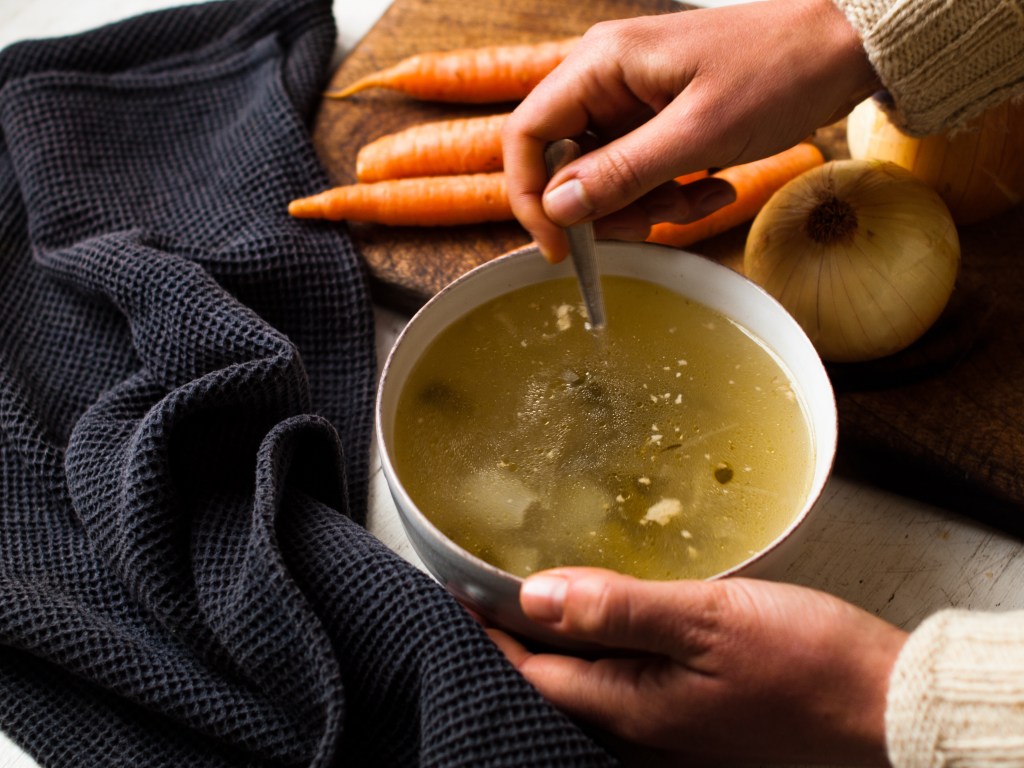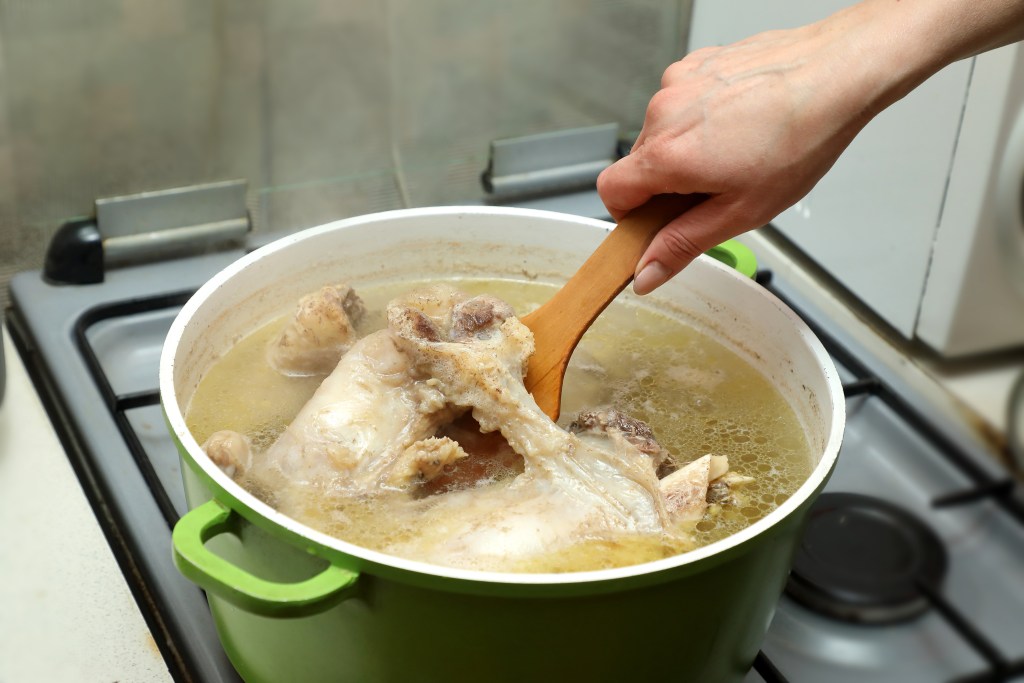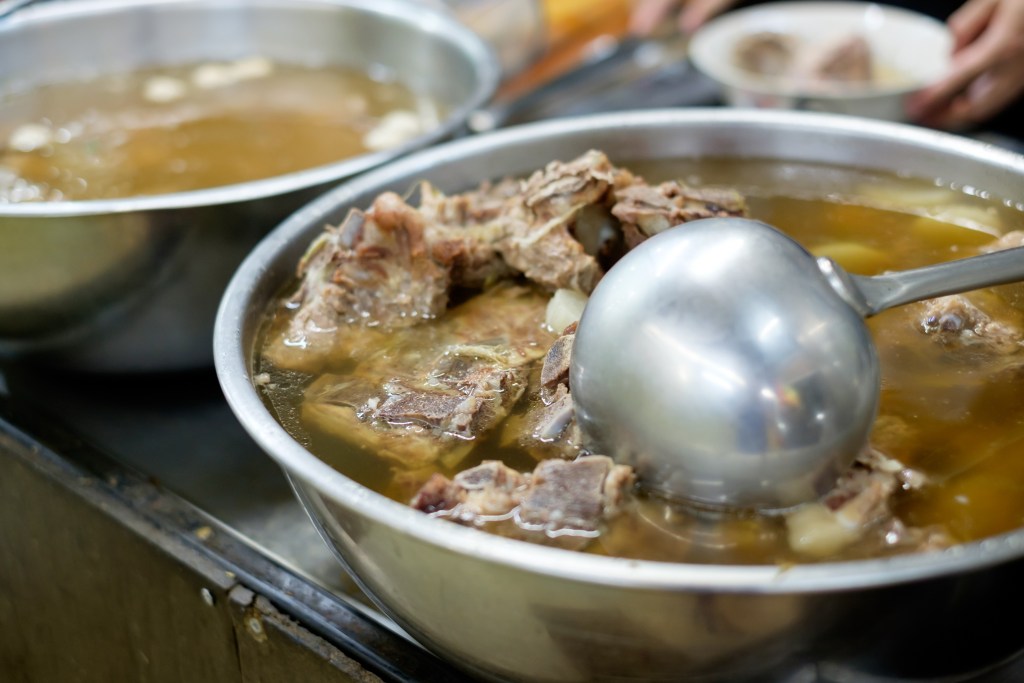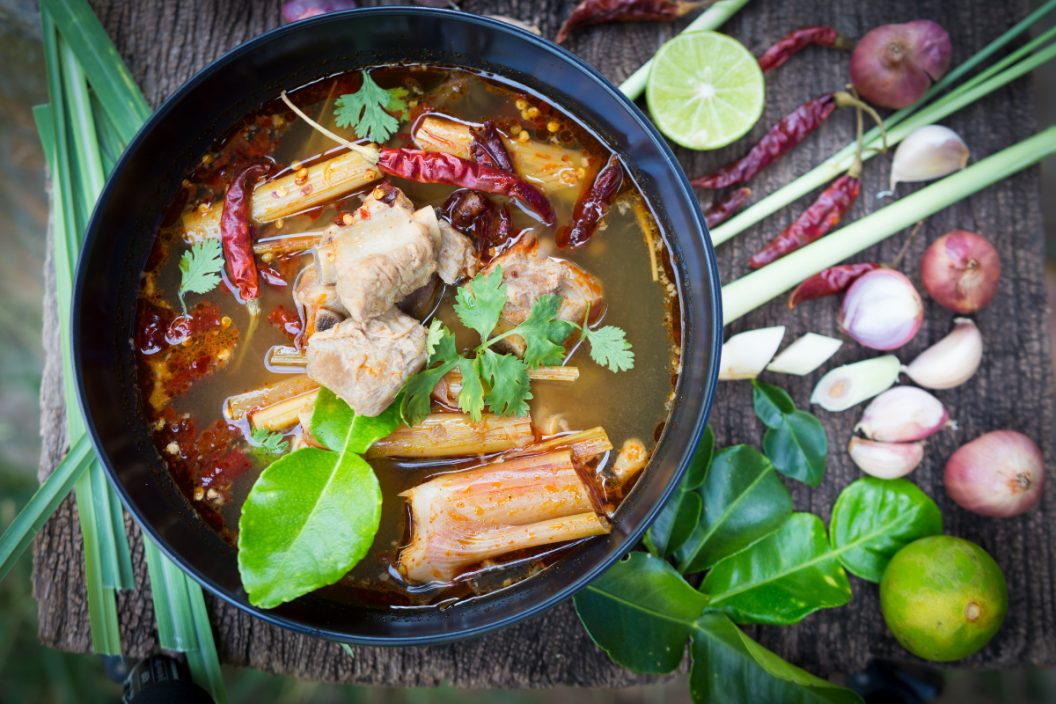Thank you, hipsters, for having the uncanny ability to make healthy, accessible foods into premier cru ingredients that cost way more than they ever should. The latest victim: bone broth. Unfortunately, in this case, both dogs and humans are affected equally. Since this ancient beverage caught the attention of certain enclaves in New York, Los Angeles, and Austin, the number of bones to go around has been dwindling as prices have been rising.
There used to be a time when the local butcher had nowhere to give his leftover bones. Except for a few folks who made their own broth or had a pack of dogs to feed, bones tended to end up in the landfill. Now, they're selling anywhere from $2-$4 a pound. (And FYI there are not a lot of bones in 1lb.)
Even if you're not making it yourself, the price of commercially produced bone broth is becoming staggeringly high. No longer is this elixir a food for the poor. At many grocery stores, a quart rings up at more than $12.
What Is Bone Broth?
Bone broth is the nutritious liquid that remains after you simmer bones and tissue in water for a long period of time. For flavor, it often consists of veggies, herbs and spices along with an acidic ingredient like apple cider vinegar or wine. The acid is essential in breaking down the protein in connective tissue and collagen to result in a gelatinous, protein-rich, yummy broth.
While it's often used as a base for sauces, gravies and soups, bone broth was traditionally imbibed as a nourishing, restorative food. That is, people traditionally sipped broths with the intention of mitigating an illness, like a cold, or to restore and maintain general health. Drinking bone broth is beneficial to wellness in many ways, improving bone health and providing many nutrients like calcium, magnesium and potassium.
Health Benefits of Bone Broth

Bone broth also contains collagen, a structural protein in bone, cartilage and skin. When boiled, collagen breaks down into amino acids. Some of these amino acids, like glycine and glutamine, support the immune system, protecting against a leaky gut that would disrupt immune function. They also have anti-inflammatory properties, which improve symptoms of many illnesses.
Along with these benefits, bone broth helps the digestive system, allowing for a healthy movement of food through the intestines. It also has also been shown to improve joint disfunction in patients with osteoarthritis. Last but not least, bone broth only has a few carbohydrates and is keto and paleo friendly!
History of Bone Broth
Patiently stewing meat bones into a beverage has been a popular activity since the 1800s when meat broths became commercially renowned for their restorative properties as well as for their tendency to be nutrient-dense meal supplements.
In fact, by the 1860s, London hospitals were brewing thousands of pots of beef "tea" to feed their patients and ensure that they were getting as much nutrition as possible while under their care.
After its short-lived fame, bone broth fell out of fashion during the last century as a curative beverage. However, the last few years have seen a resurgence in this elixir du jour. Likely this has to do with excellent marketing campaigns that have made "all natural" and "health foods" sellable everywhere from farmers' markets to Walmart.
How Do you Make Bone Broth?

Tasty bone broth gets its gelatinous structure from collagen, which comes from the connective tissue in meat, ligaments, and bones. To make a flavorful broth full of protein and gelatin, use a variety of bones that include meaty bones and joints.
The first step in making bone broth is figuring out what kind to make and which bones to use. If you're making beef bone broth, it's best to use shanks, oxtails, neck bones, knuckle bones, and marrow bones. Chicken broth is best with a whole chicken, chicken feet, a roasted chicken frame, or chicken feet. As for turkey broth, it's tasty made from the frame of a roasted turkey, turkey backs, wing tips and feet.
Once you've decided on your meat, the cooking process is simple, albeit time consuming. Roast the bones in the oven on a baking sheet, then transfer them to a heavy stock pot on the stovetop. Pour the water (a lot of water), an acidic ingredient, and whatever you prefer for flavoring into the large pot. Bay leaves, sea salt, and pepper are popular choices. Some bone broth recipes call for filtered water, but you can use regular water if that's what you have on hand.
Then, you simply simmer for at least 8 hours depending on the recipe and your personal preferences. Using an instant pot or slow cooker rather than a stock pot is the easiest way to go, and pressure cookers will save an incredible amount of cooking time, taking about an hour rather than 8-12. If you don't have an instant pot or slow cooker, you can find them on Amazon. The best part of making bone broth is that you can keep it in large mason jars and store it for up to six months in the freezer. Make your own bone broth here!
Cheaper Options

There is a caveat here. Most bone broth devotees are drinking broth made out of chicken and beef bones which are steadily rising in price. Not many people, however, are utilizing other animals' skeletons.
Therefore, perhaps it's time to start sampling alternatives to the mainstream meat "teas" to save your finances. Some options to consider are lamb, bison, pork, turkey and alpaca bones.
Watch: Food Combinations Only Southerners Will Understand
This post was originally published on February 20, 2018.




